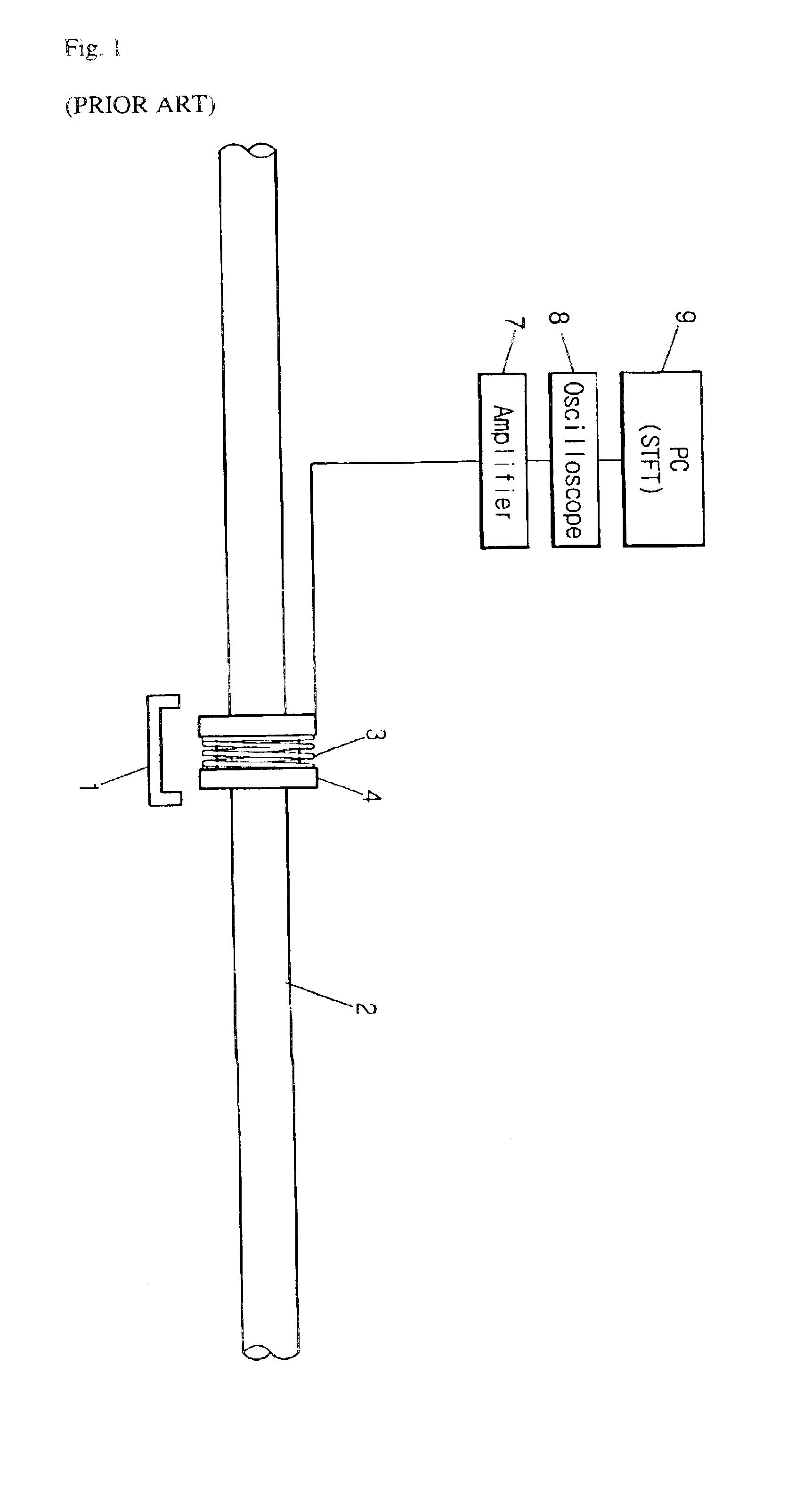Methods and apparatus for measuring flexural wave and/or flexural vibration using a magnetostrictive sensor
a technology of flexural wave and magnetostrictive sensor, which is applied in the direction of vibration measurement in solids, instruments, specific gravity measurement, etc., can solve the problem of too small sensor output for accurate measurement, and achieve the effect of optimizing the topology of bias magnet and bias yoke, accurate measurement, and maximizing output signal
- Summary
- Abstract
- Description
- Claims
- Application Information
AI Technical Summary
Benefits of technology
Problems solved by technology
Method used
Image
Examples
first embodiment
A first embodiment of the present invention illustrates an apparatus and the method of maximizing the output signal of the sensor by optimizing the bias magnets of the magnetostrictive sensor when the flexural wave propagates. In the present invention, the density method and OC (Optimality Criterion) have been adopted as an optimization strategy.
In the first place, the magnetostrictive effect is modeled and expressed as the following equation 1.
B=qσ+μH [equation 1]
where μ represents the permeability, q, the magneto-elastic coupling coefficient, B, the magnetic induction, and H, the magnetic field strength applied by the bias magnet.
The time-variation of the magnetic induction can be measured by Faraday-Lentz's law. The second term of equation 1 can be ignored in evaluating the voltage output of the pick-up coil. Therefore, the output voltage ν of the pick-up coil can be written as the following v=-N∫AⅆBⅆt ⅆA=CN∫Aⅆσⅆt ⅆA[equation 2]
where C denotes some constant, N, the num...
second embodiment
the present invention uses an electromagnet of a fixed size as a bias magnet to facilitate the manufacturing of the magnetostrictive sensor, and maximizes the output signal of the sensor by optimizing the topology and the shape of bias yoke of the magnetostrictive sensor. In the second embodiment, the density method and OC (Optimality Criterion) have been applied as optimization techniques, as in the case of first embodiment. Unlike the first embodiment, however, the nonlinearly varying magnetic permeability is also considered in the second embodiment.
In maximizing the voltage output of sensor for the second embodiment, the volume constraint condition is expressed as equations 3 and 4 used for the first embodiment. However, in the second embodiment; only the bias yoke is optimized, where the magnetic permeability of the yoke is modeled as equation 12.
μ=μ0{1+(μ3−1)ρn} [equation 12]
where μ3 denotes the permeability of the bias yoke.
In case where the bias yoke is assumed to behave lin...
PUM
| Property | Measurement | Unit |
|---|---|---|
| magnetic field | aaaaa | aaaaa |
| ferromagnetic | aaaaa | aaaaa |
| magnetic field distribution | aaaaa | aaaaa |
Abstract
Description
Claims
Application Information
 Login to View More
Login to View More - R&D
- Intellectual Property
- Life Sciences
- Materials
- Tech Scout
- Unparalleled Data Quality
- Higher Quality Content
- 60% Fewer Hallucinations
Browse by: Latest US Patents, China's latest patents, Technical Efficacy Thesaurus, Application Domain, Technology Topic, Popular Technical Reports.
© 2025 PatSnap. All rights reserved.Legal|Privacy policy|Modern Slavery Act Transparency Statement|Sitemap|About US| Contact US: help@patsnap.com



